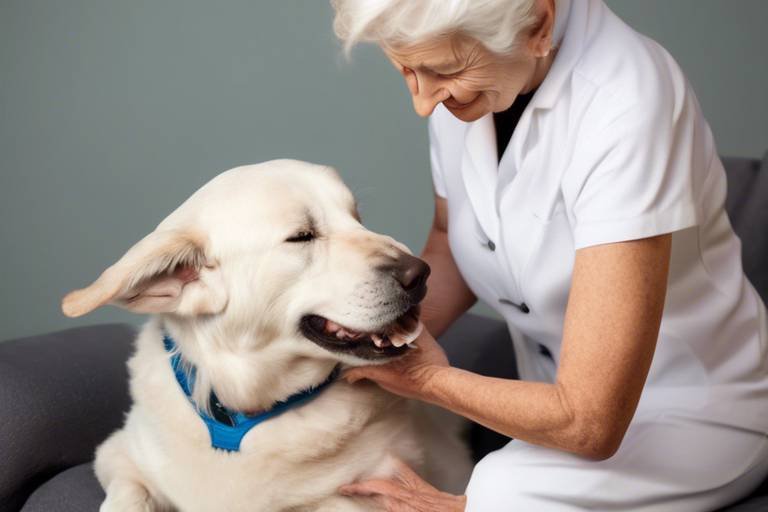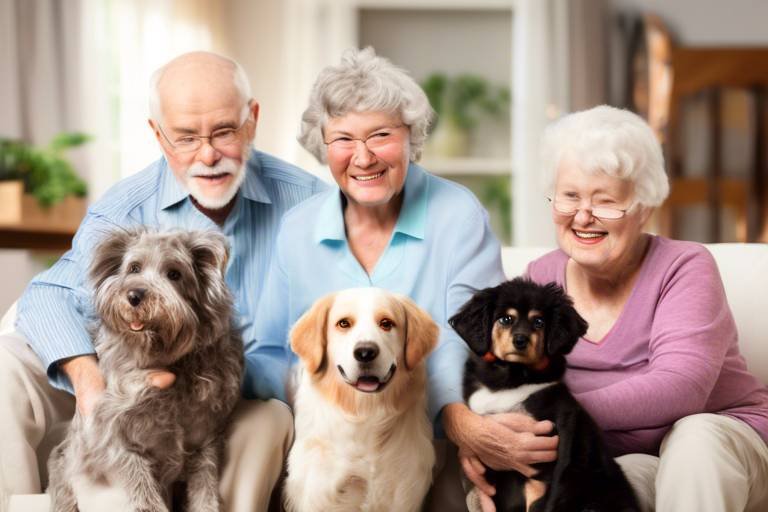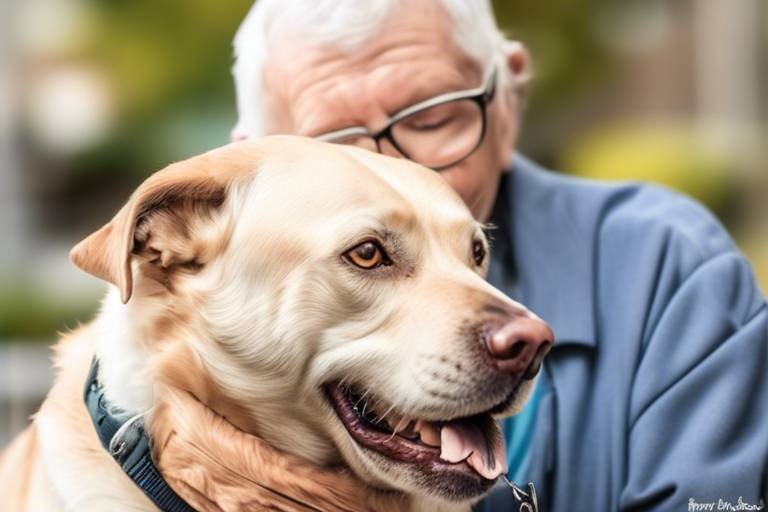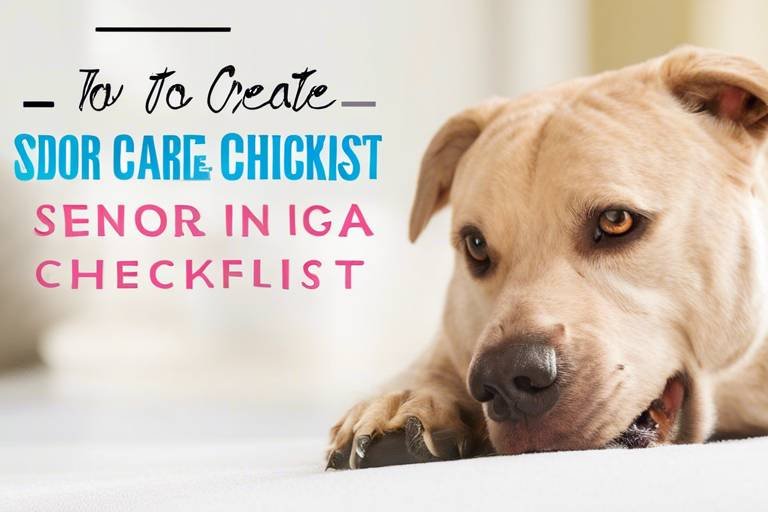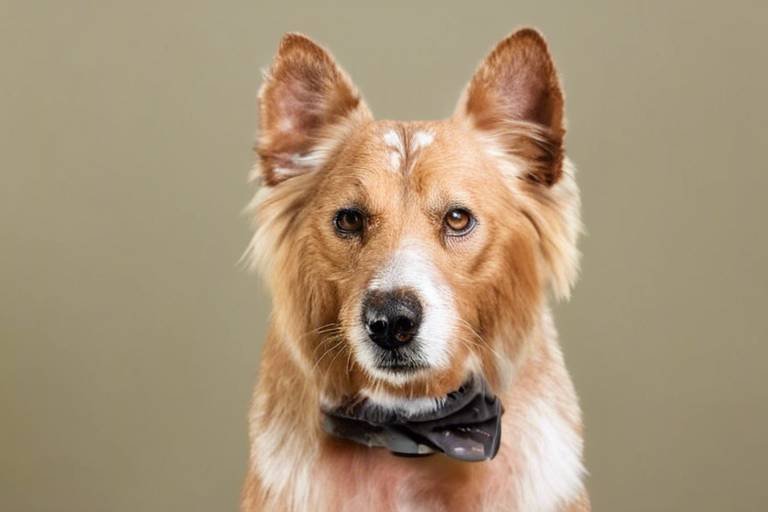The Benefits of Canine Massage Therapy for Seniors
This article explores how canine massage therapy can enhance the well-being of senior dogs, addressing physical, emotional, and psychological benefits while improving their overall quality of life.
Canine massage therapy is a holistic approach that combines various techniques to promote relaxation and healing in dogs. Just like us, our furry friends can experience stress and discomfort, especially as they age. The principles of canine massage are rooted in the understanding of canine anatomy and physiology. Techniques such as effleurage (long, gliding strokes), petrissage (kneading), and friction (rubbing) are used to stimulate circulation, relieve tension, and enhance overall well-being. By employing these methods, massage therapy can help senior dogs feel more comfortable in their own skin, making it a valuable addition to their care regimen.
As dogs age, they often face a myriad of physical challenges that can hinder their quality of life. Regular massage therapy can provide numerous physical benefits for senior dogs, including:
- Improved Circulation: Massage increases blood flow, which is crucial for delivering oxygen and nutrients to tissues.
- Enhanced Flexibility: Gentle stretching and manipulation of muscles help maintain flexibility and reduce stiffness.
- Pain Relief: By targeting sore muscles and joints, massage can alleviate discomfort associated with conditions like arthritis.
These physical benefits not only help your dog feel better but can also prolong their active years, allowing them to enjoy life to the fullest.
Did you know that physical touch can significantly impact a senior dog's emotional health? Massage therapy offers a unique way to foster emotional well-being in older canines. The soothing strokes and gentle pressure can:
- Reduce Anxiety: Many senior dogs experience anxiety, whether due to changes in their environment or health issues. Massage can help calm their nerves.
- Improve Mood: The release of endorphins during massage can lead to a happier, more relaxed dog.
Think of it as a warm hug; it reassures them and strengthens the bond they share with their human companions.
As dogs age, their mobility often declines, leading to a less active lifestyle. Regular massage therapy can play a critical role in maintaining and even improving mobility and flexibility in senior dogs. The gentle manipulation of muscles and joints encourages a greater range of motion, making it easier for your dog to move around comfortably. This is especially important for dogs that may have previously enjoyed running and playing but now struggle with joint stiffness. By incorporating massage into their routine, you can help your furry friend maintain their zest for life.
Canine massage therapy isn't just beneficial for the dogs; it also offers an incredible opportunity for owners to connect with their pets on a deeper level. The act of giving a massage can strengthen the bond between dog and owner, creating a sense of trust and companionship. Engaging in this hands-on therapy allows you to be attuned to your dog's needs, helping you recognize any changes in their behavior or health. It’s a beautiful, mutual experience that can enhance the relationship you share.
Regular massage can serve as a preventative measure against common age-related issues. By incorporating massage therapy into your senior dog's routine, you can help maintain their overall health and well-being. Some of the preventative benefits include:
- Identifying Health Issues Early: During massage, you may notice lumps, bumps, or areas of discomfort that could require veterinary attention.
- Maintaining Muscle Tone: Regular sessions help keep muscles strong and prevent atrophy.
Think of it as a form of proactive care, allowing you to stay ahead of potential health concerns.
Selecting a qualified canine massage therapist is crucial for ensuring your senior dog receives the best care. Look for professionals who are certified and have experience working with older dogs. A good therapist should be knowledgeable about canine anatomy and be able to tailor their approach to meet your dog's specific needs. Don't hesitate to ask for recommendations or read reviews from other pet owners to find someone who is a perfect fit for your furry friend.
Incorporating massage therapy into your senior dog's routine can be incredibly beneficial. Here are some tips to help you effectively integrate massage into your pet's care regimen:
- Start Slowly: If your dog is new to massage, begin with short sessions and gradually increase the duration.
- Create a Calm Environment: Choose a quiet space where your dog feels safe and relaxed.
- Be Consistent: Regular sessions will yield the best results, so try to establish a routine.
By making massage a regular part of your dog's life, you're not just improving their physical health; you're also enhancing their emotional well-being.
Real-life experiences can highlight the benefits of canine massage therapy. Many pet owners have reported positive changes in their senior dogs after incorporating massage into their care routines. For instance, one owner shared how their once anxious dog became more relaxed and playful after just a few sessions. Another reported significant improvements in their dog's mobility, allowing them to enjoy walks again. These success stories serve as a testament to the transformative power of canine massage therapy.
Q: How often should I schedule massage therapy for my senior dog?
A: It often depends on your dog's specific needs, but many owners find that once a week or every other week works well.
Q: Can I learn to massage my dog at home?
A: Absolutely! Many resources are available to help you learn basic massage techniques that you can perform at home.
Q: Is canine massage therapy safe for all dogs?
A: While generally safe, it's important to consult your veterinarian before starting any new therapies, especially if your dog has existing health issues.
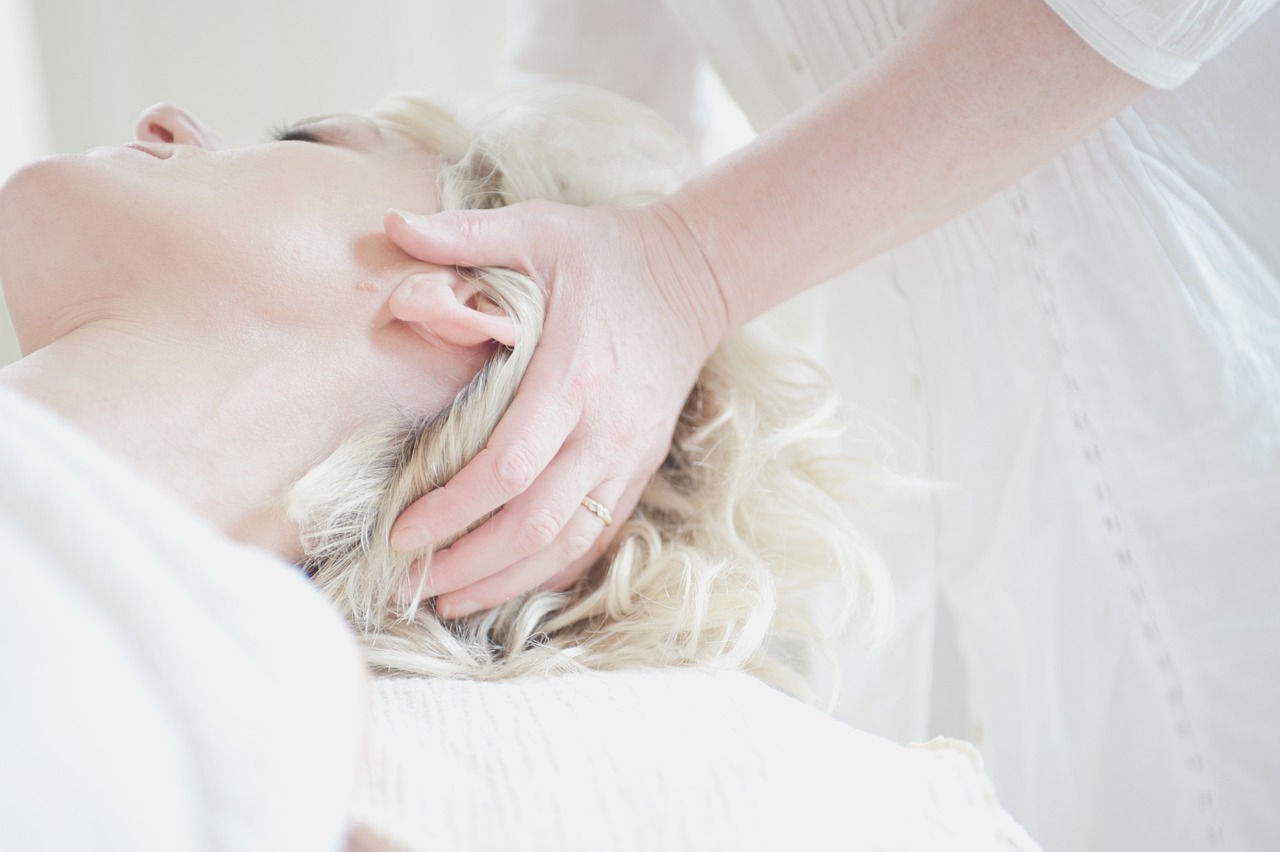
Understanding Canine Massage Therapy
Canine massage therapy is a holistic approach designed to promote relaxation and healing in our furry companions. Just like humans, dogs can experience stress, tension, and physical discomfort. This therapy employs various techniques that not only soothe but also stimulate the body’s natural healing processes. Imagine giving your dog a warm hug that melts away their worries—this is what canine massage therapy aims to achieve!
At its core, canine massage therapy involves manipulating the soft tissues of the dog’s body, including muscles, tendons, and ligaments. The primary techniques used can include:
- Effleurage: A gentle stroking movement that warms up the muscles and promotes relaxation.
- Petrissage: Kneading techniques that help to relieve tension and improve circulation.
- Friction: More intense movements that target specific areas of discomfort or tightness.
- Tapotement: Rhythmic tapping that energizes the muscles and stimulates blood flow.
Each of these methods serves a unique purpose, and when combined, they create a comprehensive therapy session that can address a multitude of issues. For senior dogs, this is particularly beneficial as it can help alleviate age-related ailments. Think of it as a tailored workout session for your dog, designed not just to keep them fit but to also pamper and rejuvenate them.
Moreover, the benefits of canine massage therapy extend beyond just physical relief. The act of massage fosters a deep sense of trust and comfort between the dog and the therapist (or owner). It’s a bonding experience that can significantly enhance the emotional well-being of your pet. Imagine how comforting it must feel for a dog to receive loving touch and attention, especially as they navigate the challenges of aging.
As we delve deeper into the world of canine massage therapy, it’s essential to understand that this practice is not a one-size-fits-all solution. Each dog is unique, with its own set of needs and preferences. Therefore, it’s crucial to approach massage therapy with an open mind and a willingness to adapt techniques to suit your dog’s individual requirements. Whether it’s a gentle rub on their back or a more focused approach on their sore joints, the goal is to create a positive and healing experience for your senior canine.
In conclusion, understanding canine massage therapy is the first step towards enhancing your senior dog’s quality of life. By exploring various techniques and recognizing the importance of emotional connection, you can create a nurturing environment that promotes both physical and psychological well-being. So, why not give it a try? Your furry friend deserves all the love and care you can provide!

Physical Benefits for Senior Dogs
As our beloved canine companions age, they often encounter a range of physical challenges that can affect their overall well-being. This is where canine massage therapy comes into play, offering a holistic approach to enhancing the physical health of senior dogs. One of the most remarkable benefits of canine massage is its ability to promote improved circulation. Just like in humans, better blood flow means that nutrients and oxygen are delivered more efficiently to the muscles and organs, which is crucial for older dogs who may be dealing with conditions like arthritis or joint pain.
Imagine your senior dog as a well-loved car that has been through many journeys. Over time, parts may wear down, but with the right care, it can still run smoothly. Similarly, massage therapy can help maintain your dog's "engine" by alleviating tension in the muscles and improving flexibility. This is particularly important for senior dogs who often experience stiffness and reduced mobility. Regular massage can help keep those muscles limber, making it easier for them to get up, walk, and play without discomfort.
Another significant advantage of massage therapy is its ability to provide pain relief. Many senior dogs suffer from chronic pain due to conditions like hip dysplasia or degenerative joint disease. By gently manipulating the muscles and soft tissues, massage can help release endorphins, the body’s natural painkillers. This not only helps to relieve pain but also promotes a sense of relaxation and comfort, which can significantly enhance your dog's quality of life.
Furthermore, massage therapy can assist in reducing inflammation in the joints and muscles. For senior dogs, inflammation can lead to discomfort and decreased mobility, making everyday activities a challenge. Regular massage sessions can help to mitigate these issues, allowing your furry friend to enjoy a more active lifestyle.
To illustrate the physical benefits of canine massage therapy, consider the following table summarizing key advantages:
| Benefit | Description |
|---|---|
| Improved Circulation | Enhances blood flow, delivering essential nutrients and oxygen to tissues. |
| Pain Relief | Reduces chronic pain through the release of endorphins. |
| Increased Flexibility | Helps maintain and improve muscle flexibility and joint mobility. |
| Reduced Inflammation | Decreases inflammation in joints and muscles, improving comfort. |
In conclusion, the physical benefits of canine massage therapy for senior dogs cannot be overstated. Just as we seek ways to stay active and healthy as we age, our furry friends deserve the same attention and care. By incorporating massage therapy into their routine, you are not only addressing their physical needs but also enhancing their overall quality of life, allowing them to enjoy their golden years to the fullest.
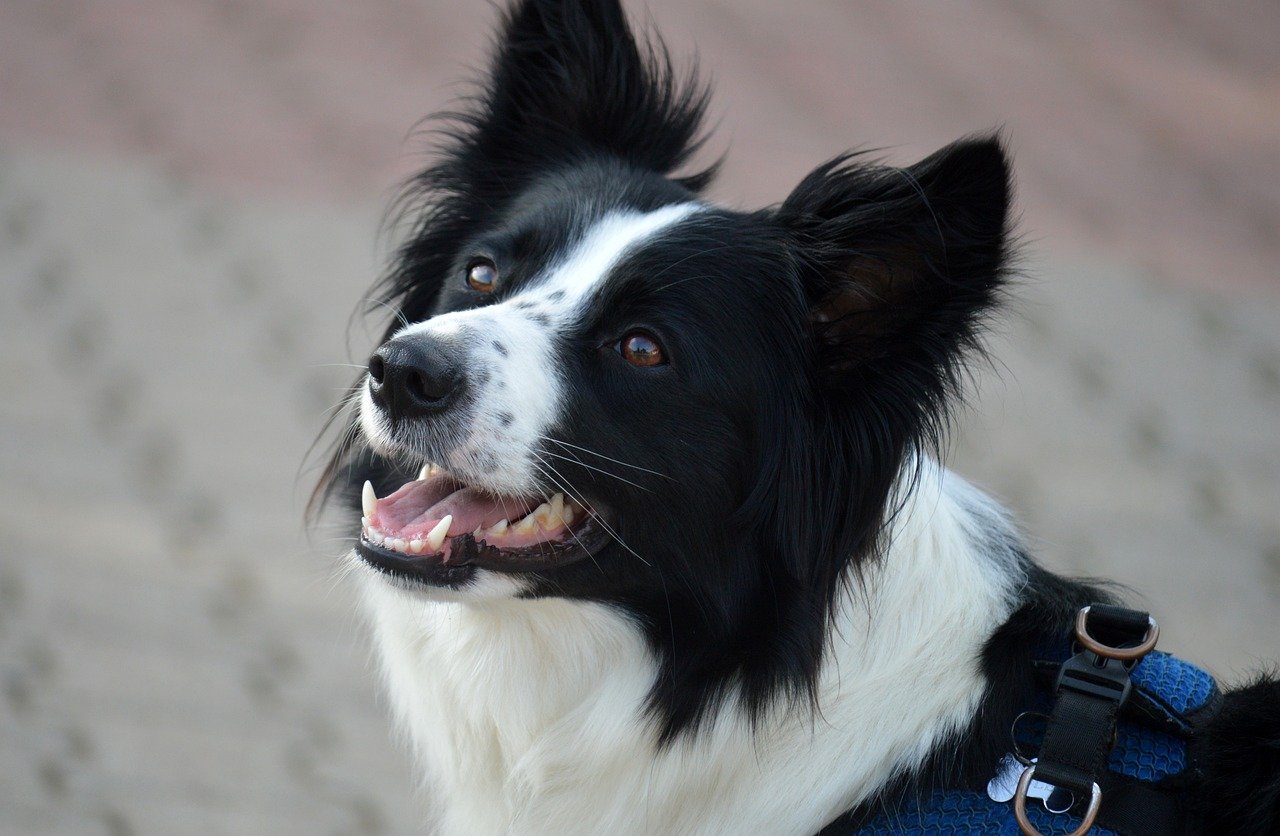
Emotional Well-being Through Touch
When it comes to our beloved senior dogs, their emotional well-being is just as important as their physical health. Canine massage therapy offers a unique way to provide comfort and affection, which can significantly enhance the emotional state of older dogs. Imagine the warmth of a gentle touch; it's not just soothing for humans, but for dogs too. This therapy taps into the primal need for connection, allowing our furry friends to feel loved and secure.
As dogs age, they often experience changes in their environment and routine, which can lead to feelings of anxiety or depression. This is where the magic of massage therapy comes in. The rhythmic strokes and gentle pressure can help to release endorphins—those feel-good hormones that can lift a dog’s spirits. Just like a cozy blanket on a chilly day, a massage can wrap your dog in a sense of peace and tranquility.
Furthermore, the act of touching can significantly reduce stress levels in dogs. When you massage your senior dog, you’re not just working on their muscles; you’re also fostering a calming atmosphere. The simple act of touch can lower heart rates and reduce cortisol levels, which are often linked to stress. This is especially beneficial for senior dogs who might be dealing with the anxiety of aging, changes in their living situation, or even the loss of a companion.
To illustrate the emotional benefits, consider the following ways in which massage therapy can positively impact your senior dog's mood:
- Reduces Anxiety: Regular sessions can help alleviate anxiety, particularly in stressful situations such as thunderstorms or vet visits.
- Enhances Comfort: The soothing nature of massage can provide relief from discomfort, leading to a happier dog.
- Promotes Relaxation: A relaxed dog is a happy dog. Massage encourages a state of relaxation that can improve overall mood.
- Strengthens Trust: The bond between you and your dog deepens with each massage, reinforcing feelings of safety and trust.
In essence, canine massage therapy is a beautiful way to show your senior dog that you care. By incorporating this practice into their routine, you are not only addressing their physical needs but also nurturing their emotional health. Just as we feel rejuvenated after a comforting hug, our dogs too can experience a renewed sense of happiness and well-being through the power of touch.
Q: How often should I massage my senior dog?
A: Ideally, you should aim for at least once a week, but even a few minutes of massage a couple of times a week can be beneficial.
Q: Can I learn to massage my dog myself?
A: Absolutely! There are many resources available, including books and online tutorials, that can teach you the basics of canine massage.
Q: What signs indicate my dog might enjoy massage therapy?
A: Look for signs like leaning into your touch, relaxed breathing, and a wagging tail. If your dog seems to enjoy the experience, it’s a good sign!
Q: Are there any dogs that should not receive massage therapy?
A: Yes, dogs with certain medical conditions or injuries should be evaluated by a veterinarian before starting massage therapy. Always consult with a professional if you're unsure.
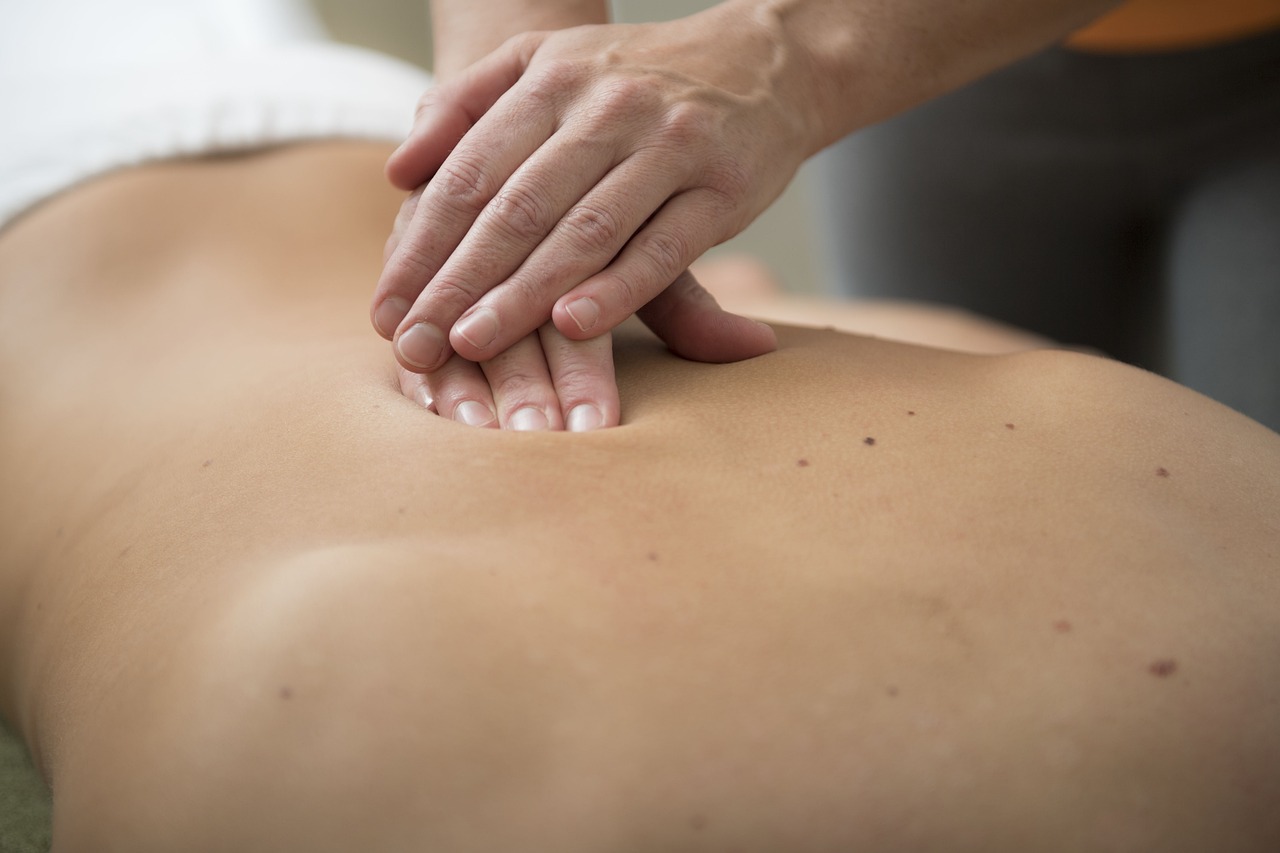
Improving Mobility and Flexibility
As our furry friends age, they often experience a decline in mobility and flexibility, which can lead to a host of issues, including decreased activity levels and an overall decline in quality of life. This is where canine massage therapy shines as a beacon of hope. Imagine your senior dog, once sprightly and full of energy, now struggling to jump onto the couch or keep up during a leisurely walk. It’s heartbreaking, isn’t it? But fear not! Regular massage therapy can work wonders in rejuvenating their physical capabilities.
One of the primary ways massage therapy aids in mobility is by increasing blood circulation. Improved circulation means that oxygen and nutrients are delivered more efficiently to the muscles and joints, which is vital for maintaining their strength and flexibility. Think of it like giving your dog’s body a tune-up, ensuring everything is running smoothly. As a result, your senior dog may experience less stiffness and discomfort, allowing them to move more freely and confidently.
In addition to enhancing circulation, massage therapy also helps in relieving muscle tension. Just like humans, dogs can develop tight muscles, particularly in their legs and back, as they age. These tight muscles can restrict movement and lead to pain. Through various techniques, such as kneading and effleurage, a skilled massage therapist can help loosen these tense areas. This not only alleviates discomfort but also promotes greater flexibility, enabling your dog to stretch and move in ways they may have thought were lost to time.
Moreover, massage therapy can assist in managing arthritis and other joint-related issues that are common in senior dogs. By applying gentle pressure and manipulation to the affected areas, massage can help reduce inflammation and improve joint function. This is particularly beneficial for dogs suffering from osteoarthritis, a degenerative joint disease that can make movement painful. The soothing effects of massage can provide your dog with much-needed relief, allowing them to regain some of their lost mobility.
To illustrate the benefits of massage therapy on mobility and flexibility, consider the following table:
| Benefit | Description |
|---|---|
| Increased Circulation | Enhances the flow of blood, delivering essential nutrients and oxygen to muscles and joints. |
| Reduced Muscle Tension | Helps alleviate tightness in muscles, allowing for greater range of motion. |
| Joint Pain Relief | Can reduce inflammation and improve joint function, particularly in arthritic dogs. |
| Enhanced Flexibility | Encourages stretching and movement, helping dogs regain their agility. |
Incorporating massage therapy into your senior dog's routine is not just a luxury; it's a necessity for maintaining their mobility and flexibility. It’s like giving them a gentle reminder that they’re still capable of enjoying life to its fullest. So, the next time you notice your dog hesitating to take that extra step or struggling to rise after a nap, consider scheduling a massage session. You’ll be amazed at the difference it can make, not only in their physical abilities but also in their overall happiness and zest for life.
1. How often should I schedule massage therapy for my senior dog?
Most experts recommend once a week or bi-weekly sessions, depending on your dog's specific needs and health conditions.
2. Can I perform massage therapy on my dog at home?
Yes, with the right techniques and guidance, you can perform basic massages at home. However, it's best to consult with a professional for advanced techniques.
3. Is massage therapy safe for all senior dogs?
While massage therapy is generally safe, it's crucial to consult your veterinarian, especially if your dog has specific health issues.

Strengthening the Human-Canine Bond
When it comes to our furry companions, the bond we share is nothing short of magical. Canine massage therapy is not just a pampering session for your senior dog; it's a profound way to deepen that connection between you and your beloved pet. Imagine this: as you gently knead your dog's muscles, you're not just relieving tension; you're also communicating love and trust through touch. This therapeutic practice creates a space where both you and your dog can unwind and enjoy each other's company, reinforcing your emotional connection.
During a massage session, your dog can sense your presence and care, which can be incredibly comforting, especially for senior dogs who may be dealing with anxiety or discomfort. The rhythmic strokes and soothing motions can evoke feelings of safety and affection, making your dog feel cherished. This is especially important as dogs age and may face various challenges, both physical and emotional. By incorporating massage into their routine, you're sending a clear message: "I see you, I care for you, and I'm here for you."
Moreover, the act of massaging your dog can be a bonding experience that fosters trust. As you learn to read your dog's body language and understand their preferences, you'll become more attuned to their needs. This heightened awareness can lead to a stronger relationship where your dog feels more secure and loved. After all, who wouldn’t want to be a source of comfort for their furry friend? It’s a win-win situation!
Here are some key aspects of how canine massage therapy strengthens the bond between you and your dog:
- Enhanced Communication: Through touch, you can learn more about your dog's comfort levels and preferences, fostering a deeper understanding.
- Shared Relaxation: Both you and your dog can benefit from the calming effects of massage, creating a peaceful environment that enhances your connection.
- Quality Time: Regular massage sessions provide dedicated time together, reinforcing your relationship and creating lasting memories.
In essence, canine massage therapy is more than just a physical treatment; it's a pathway to emotional closeness. By engaging in this nurturing practice, you not only help your senior dog feel better physically but also enrich the emotional tapestry of your relationship. So, the next time you set aside some time for a massage session, remember that you're not just easing aches and pains; you're also fortifying the bond that makes your relationship with your dog so special.
Q: How often should I massage my senior dog?
A: It's generally recommended to massage your senior dog 1-2 times a week, but you can adjust this based on your dog's specific needs and preferences.
Q: Can any dog benefit from massage therapy?
A: Yes! While senior dogs often benefit the most, dogs of all ages can enjoy and gain from massage therapy.
Q: What techniques should I use during a massage?
A: Start with gentle strokes and kneading, focusing on areas where your dog seems to hold tension. Always pay attention to their reactions and adjust accordingly.
Q: Should I consult a professional massage therapist?
A: If you're unsure about techniques or your dog has specific health concerns, consulting a professional canine massage therapist can be very beneficial.

Preventative Care for Aging Dogs
As our beloved canine companions grow older, the importance of preventative care becomes increasingly evident. Just like humans, senior dogs are susceptible to a range of age-related health issues, and taking proactive steps can significantly enhance their quality of life. One such step is incorporating canine massage therapy into their routine. This therapeutic practice not only addresses existing ailments but also serves as a preventive measure, helping to stave off potential problems before they arise.
Regular massage sessions can help identify physical issues early on. For instance, while massaging your dog, you might notice unusual lumps, swelling, or areas of discomfort that you may not have detected otherwise. This early detection can lead to timely veterinary intervention, which is crucial in managing health conditions effectively. Moreover, massage promotes circulation and can help prevent stiffness in joints, keeping your furry friend more agile and comfortable as they age.
Additionally, massage therapy encourages the release of endorphins, the body's natural painkillers. This release not only alleviates discomfort but also enhances your dog's overall mood, contributing to a happier, healthier life. By regularly engaging in massage, you are not just pampering your pet; you are actively participating in their health maintenance. This routine can help mitigate common issues such as arthritis, muscle atrophy, and even digestive problems that can arise with age.
Incorporating massage therapy into your senior dog's care routine can be straightforward. Here are some tips:
- Start with short sessions of about 5-10 minutes, gradually increasing the duration as your dog becomes more comfortable.
- Focus on areas that are prone to tension, such as the neck, shoulders, and lower back.
- Always observe your dog’s reaction; if they seem uncomfortable, adjust your technique or consult a professional.
Ultimately, the goal of preventative care through canine massage therapy is to enhance your dog's overall health and well-being. By making this practice a regular part of their life, you are not only addressing current issues but also laying the groundwork for a healthier future. The bond you strengthen through these shared moments of care and attention will undoubtedly enhance the emotional connection you share with your senior dog.
- How often should I massage my senior dog? It is recommended to massage your senior dog 1-2 times a week, depending on their needs and comfort level.
- Can I massage my dog myself? Yes! With proper techniques and guidance, you can provide effective massages at home. However, consider consulting a professional for more complex issues.
- What signs indicate my dog may need massage therapy? Look for signs of stiffness, limping, anxiety, or changes in behavior, which may suggest discomfort or stress.
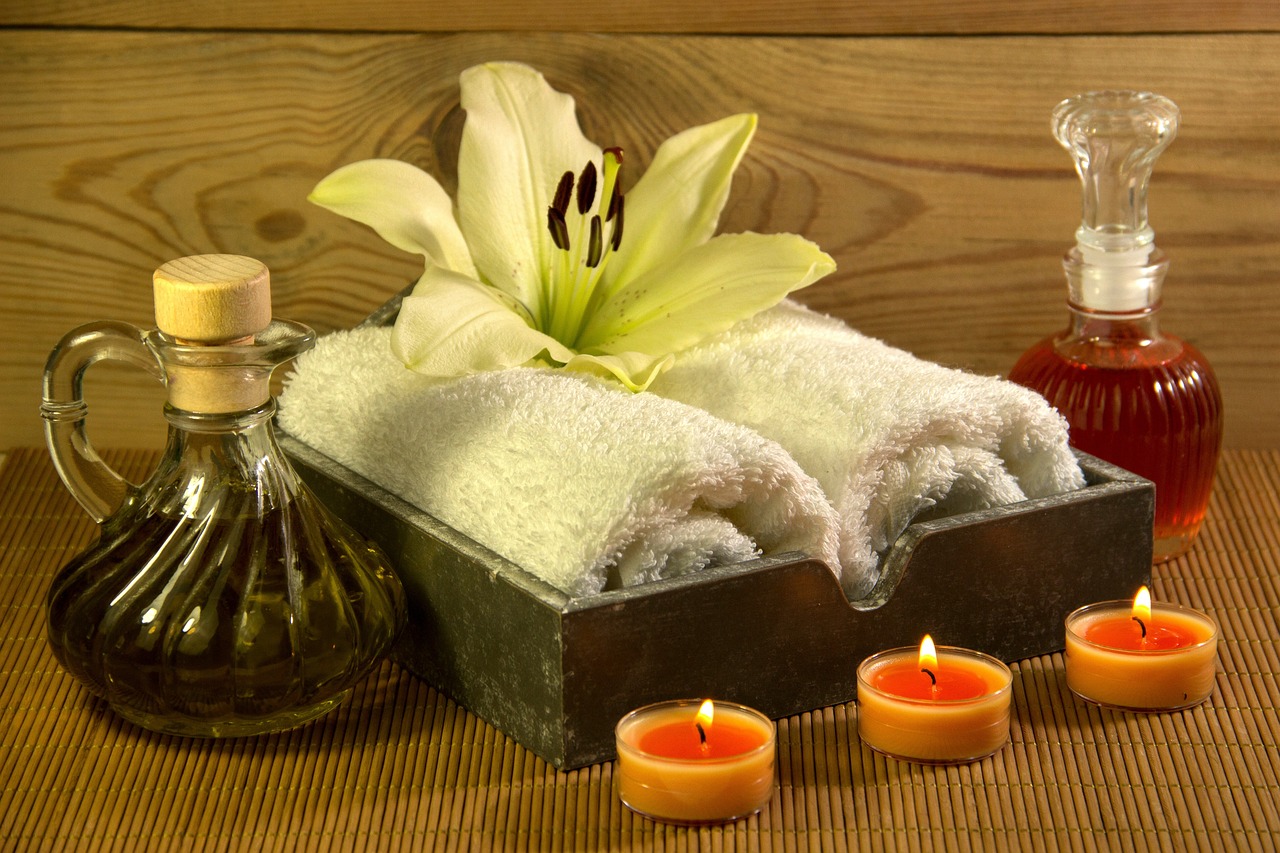
Choosing the Right Massage Therapist
When it comes to selecting a massage therapist for your senior dog, the process can feel a bit overwhelming. After all, you want the best for your furry friend! The right therapist can make a world of difference in your dog's well-being and comfort. So, how do you find the perfect match? Here are some essential factors to consider:
First and foremost, credentials matter. Look for a therapist who is certified in canine massage therapy. This certification ensures that they have undergone proper training and understand the unique anatomy and physiology of dogs. You might want to ask about their educational background and any specialized training they may have received. A therapist who is knowledgeable about different breeds and their specific needs can tailor the massage to suit your dog's condition.
Next, consider their experience. A therapist with years of experience working with senior dogs will likely have a better understanding of age-related issues, such as arthritis or mobility challenges. Don't hesitate to ask for references or testimonials from other pet owners—this can provide valuable insight into the therapist's effectiveness and approach.
Additionally, observe the therapist's approach during the initial consultation. It’s essential that they exhibit a gentle and calm demeanor, as this will help your dog feel at ease. A good therapist will take the time to assess your dog's condition and discuss any concerns you might have. They should also be open to answering your questions and providing information about the techniques they use.
Another key aspect to consider is the environment in which the therapy takes place. A comfortable and soothing atmosphere can significantly enhance the massage experience for your senior dog. Whether it’s a dedicated massage studio or your own home, ensure that the space is clean, quiet, and free from distractions. This will help your dog relax and fully enjoy the benefits of the therapy.
Lastly, consider the cost of the sessions. While you don’t want to compromise on quality, it’s essential to find a therapist whose prices fit within your budget. Some therapists may offer package deals or discounts for multiple sessions, which can make regular massage therapy more affordable. Remember, investing in your dog's health and happiness is priceless!
In summary, choosing the right massage therapist for your senior dog involves careful consideration of their credentials, experience, approach, environment, and cost. By taking the time to find a qualified professional, you can ensure that your furry friend receives the care and attention they deserve, ultimately enhancing their quality of life.
- How often should I schedule massage therapy for my senior dog?
It often depends on your dog's specific needs and health conditions. Many owners find that weekly or bi-weekly sessions work well, but it's best to consult with your therapist for personalized recommendations. - Can I learn to give my dog massages at home?
Absolutely! Many therapists offer workshops or instructional materials to help you learn basic techniques that you can practice at home. Just be sure to follow their guidelines to ensure your dog's safety and comfort. - What signs indicate that my dog may benefit from massage therapy?
If your dog shows signs of discomfort, stiffness, anxiety, or has difficulty moving, massage therapy could be beneficial. Always consult with your veterinarian to determine the best course of action.

Integrating Massage Therapy into Routine Care
Integrating canine massage therapy into your senior dog's routine care can be a game changer, enhancing their overall well-being and quality of life. Think of it like adding a sprinkle of magic to their day! Just as we humans benefit from a little pampering, our furry friends can thrive with the soothing touch of a massage. But how do you seamlessly weave this into their daily life? Let's explore some practical tips and insights.
First and foremost, consistency is key. Just like a good workout routine, regularity can amplify the benefits of massage therapy. Aim for a schedule that suits both you and your dog. For instance, you might consider setting aside a few minutes each day or a couple of times a week. Start with short sessions of about 10-15 minutes, gradually increasing the duration as your dog becomes accustomed to the process. This way, it becomes a cherished part of their routine rather than a chore.
To make the most of these sessions, create a calming environment. Find a quiet space where your dog feels safe and relaxed—perhaps their favorite spot on the couch or a cozy blanket on the floor. Dimming the lights and playing soft music can also help set the mood. Remember, this is not just about the massage itself; it’s about creating an experience that your dog will look forward to. You want to foster an atmosphere of peace and relaxation.
Additionally, consider incorporating massage therapy into other aspects of your dog's care routine. For example, you can pair it with grooming sessions. While brushing your dog, take a moment to massage their muscles gently. This not only helps them relax during grooming but also strengthens the bond between you two. You might even find that your dog starts to enjoy grooming time more than ever!
Moreover, keep an eye on your dog's reactions. Every dog is unique, and their preferences may vary. Some may enjoy a gentle rub on their back, while others might prefer a focus on their legs or paws. Pay attention to their body language; if they lean into your touch or let out a contented sigh, you're on the right track! Conversely, if they seem uncomfortable or anxious, it may be time to adjust your approach or consult a professional.
Lastly, don't hesitate to seek guidance from a qualified canine massage therapist. They can provide you with valuable techniques tailored to your dog's specific needs. Plus, they can teach you how to identify areas that might require more attention. By collaborating with a professional, you can ensure that your at-home massage sessions are both effective and safe.
In conclusion, integrating massage therapy into your senior dog's routine care is not just beneficial; it's an opportunity to deepen your connection with them. By creating a soothing environment, establishing a consistent schedule, and remaining attentive to their needs, you can transform what might seem like a simple act into a powerful tool for enhancing their health and happiness. So why wait? Start today and give your furry friend the gift of relaxation!
- How often should I massage my senior dog? It's recommended to start with 1-2 times a week, gradually increasing frequency as your dog becomes comfortable.
- What techniques should I use? Gentle strokes, kneading, and circular motions are great starting points. Focus on areas where your dog seems to carry tension.
- Can I do massage therapy at home? Absolutely! With the right techniques and a comfortable environment, home massages can be very effective.
- When should I consult a professional? If your dog shows signs of pain, discomfort, or if you're unsure about the techniques, it's best to consult a certified canine massage therapist.
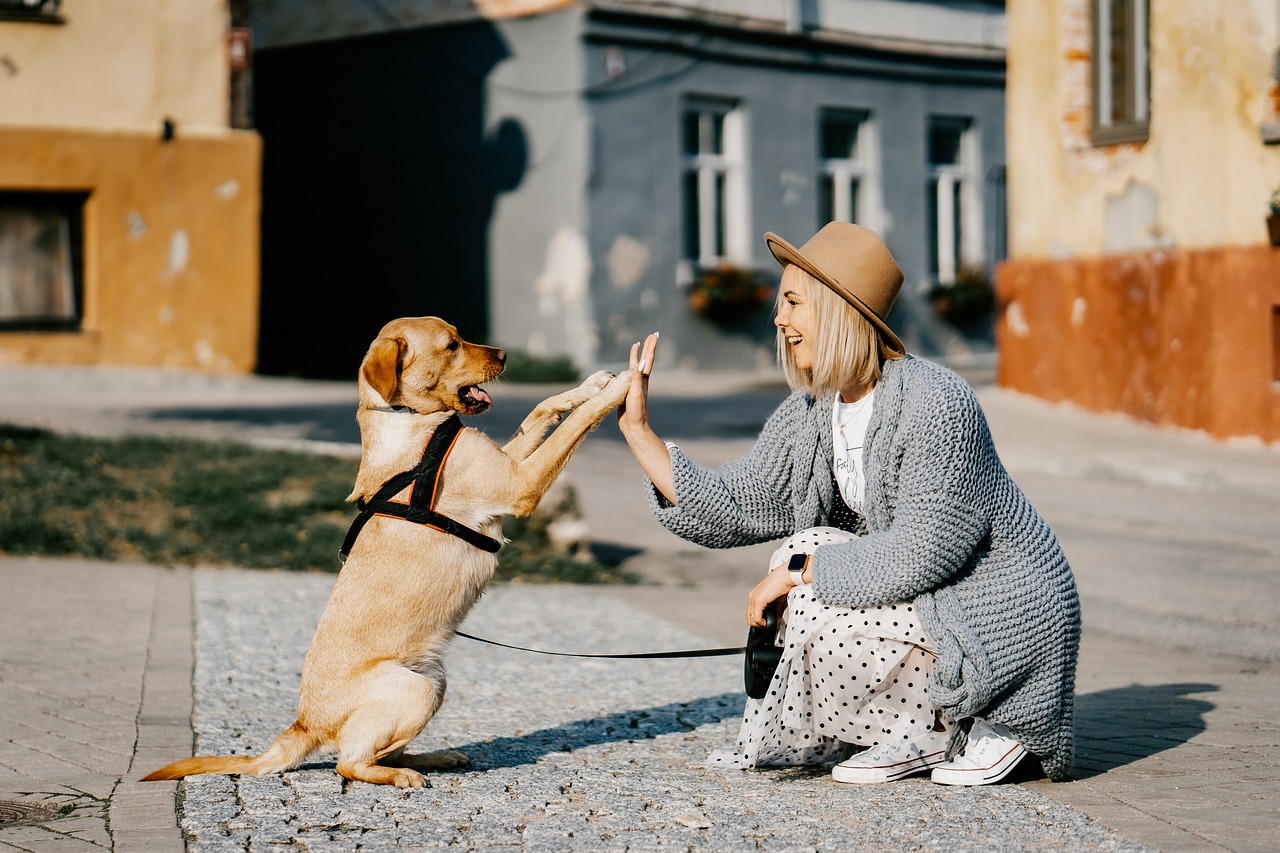
Client Testimonials and Success Stories
When it comes to understanding the true impact of canine massage therapy on senior dogs, there's nothing quite like hearing from the pet owners themselves. These heartfelt testimonials and success stories offer a glimpse into the transformative effects that massage therapy can have on our furry friends. For instance, take the story of Max, a 12-year-old Golden Retriever who had been struggling with arthritis. His owner, Lisa, shared, “After just a few sessions of massage therapy, I noticed Max was more energetic and playful. He seemed to move with less discomfort, and it brought tears to my eyes to see him wag his tail again.”
Similarly, Charlie, a senior Dachshund, experienced a remarkable change in his emotional well-being. His owner, Tom, recounted, “Charlie used to hide under the bed during thunderstorms, but after starting massage therapy, he’s much calmer. The soothing touch really seems to help him relax, and now he even cuddles up next to me during storms!”
These stories are not isolated. Many pet owners have reported similar experiences, highlighting the benefits of canine massage therapy. Here’s a quick overview of some common themes from various testimonials:
| Dog's Name | Age | Owner's Name | Reported Benefits |
|---|---|---|---|
| Max | 12 | Lisa | Increased energy, reduced discomfort |
| Charlie | 10 | Tom | Reduced anxiety, improved calmness |
| Bella | 9 | Sarah | Improved mobility, better mood |
| Rocky | 11 | James | Less stiffness, more playfulness |
As you can see from the table above, the benefits of massage therapy extend beyond just physical improvements. Many owners report a significant enhancement in their dogs' emotional health and overall happiness. It's heartwarming to witness how these sessions not only alleviate physical ailments but also bring joy and comfort to our beloved pets.
Moreover, these testimonials serve as a reminder that every dog is unique, and the effects of massage therapy can vary. However, the common thread among these success stories is the profound connection that develops between the dog and the owner during the massage sessions. This bond not only enriches the dog's life but also brings immense joy to the owner, creating a shared experience that is both healing and fulfilling.
In conclusion, the stories of Max, Charlie, Bella, and Rocky illustrate the incredible potential of canine massage therapy. If you're considering this holistic approach for your senior dog, remember that you're not just investing in their physical health; you're also nurturing their emotional well-being. As the testimonials suggest, the journey of massage therapy can lead to happier, healthier, and more connected lives for both dogs and their human companions.
As we wrap up this exploration of canine massage therapy, it's essential to address some common questions that many pet owners might have:
- How often should I schedule massage sessions for my senior dog? - Ideally, once a week is beneficial, but it can vary based on your dog's specific needs.
- Can I learn to massage my dog at home? - Yes! There are many resources available, but it's best to consult a professional first.
- Is massage therapy safe for all senior dogs? - Most senior dogs can benefit, but consult your vet if your dog has specific health issues.
- What should I look for in a canine massage therapist? - Look for qualifications, experience, and a genuine love for animals.
Frequently Asked Questions
- What is canine massage therapy?
Canine massage therapy is a holistic approach that uses various techniques to promote relaxation, healing, and overall well-being in dogs. It involves gentle manipulation of muscles and tissues to help alleviate pain, improve circulation, and enhance emotional health.
- What are the physical benefits of massage for senior dogs?
Senior dogs can experience numerous physical benefits from massage therapy, including improved circulation, enhanced flexibility, and relief from pain associated with arthritis or other age-related conditions. Regular sessions can help maintain their mobility and overall physical health.
- How does massage therapy improve emotional well-being in dogs?
Massage therapy can significantly enhance a senior dog's emotional health by providing comforting touch that reduces anxiety and stress. The relaxation induced by massage can lead to a happier, more content pet, helping to alleviate symptoms of depression or anxiety.
- Can massage help with my dog's mobility issues?
Absolutely! Regular massage can help maintain and even improve mobility in senior dogs. By loosening tight muscles and promoting better joint function, massage therapy can make it easier for your furry friend to move around comfortably.
- How can canine massage strengthen the bond between dog and owner?
Canine massage therapy provides a unique opportunity for owners to connect with their pets through touch and attention. This shared experience fosters trust and deepens the emotional bond, making both the dog and owner feel more connected.
- Is massage therapy a form of preventative care for aging dogs?
Yes! Regular massage can serve as a preventative measure against common age-related issues. By promoting relaxation and circulation, it can help maintain overall health and potentially prevent the onset of certain conditions.
- What should I look for when choosing a canine massage therapist?
When selecting a canine massage therapist, look for someone who is certified and has experience working with senior dogs. It's important to check their credentials and ask for references or testimonials from other pet owners to ensure they are qualified.
- How can I integrate massage therapy into my dog's routine?
Integrating massage therapy into your senior dog's routine can be simple and enjoyable. Start with short sessions, gradually increasing the duration as your dog becomes more comfortable. You can also incorporate massage into your daily bonding time, such as after walks or play sessions.
- Are there any success stories related to canine massage therapy?
Yes! Many pet owners have shared heartwarming testimonials about the positive changes they've seen in their senior dogs after starting massage therapy. These stories often highlight improvements in mobility, reduced anxiety, and overall enhanced quality of life.

